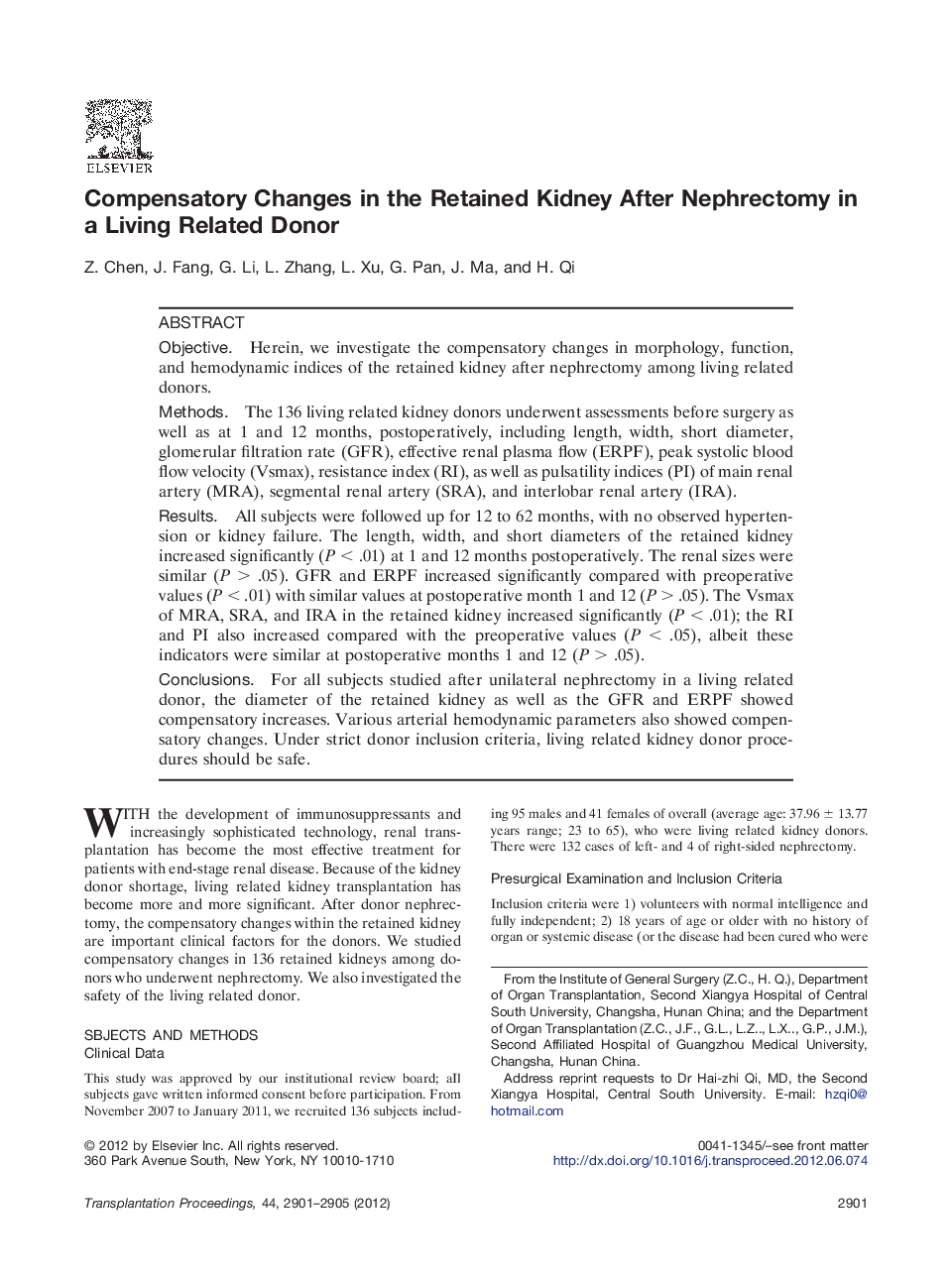| Article ID | Journal | Published Year | Pages | File Type |
|---|---|---|---|---|
| 4256202 | Transplantation Proceedings | 2012 | 5 Pages |
ObjectiveHerein, we investigate the compensatory changes in morphology, function, and hemodynamic indices of the retained kidney after nephrectomy among living related donors.MethodsThe 136 living related kidney donors underwent assessments before surgery as well as at 1 and 12 months, postoperatively, including length, width, short diameter, glomerular filtration rate (GFR), effective renal plasma flow (ERPF), peak systolic blood flow velocity (Vsmax), resistance index (RI), as well as pulsatility indices (PI) of main renal artery (MRA), segmental renal artery (SRA), and interlobar renal artery (IRA).ResultsAll subjects were followed up for 12 to 62 months, with no observed hypertension or kidney failure. The length, width, and short diameters of the retained kidney increased significantly (P < .01) at 1 and 12 months postoperatively. The renal sizes were similar (P > .05). GFR and ERPF increased significantly compared with preoperative values (P < .01) with similar values at postoperative month 1 and 12 (P > .05). The Vsmax of MRA, SRA, and IRA in the retained kidney increased significantly (P < .01); the RI and PI also increased compared with the preoperative values (P < .05), albeit these indicators were similar at postoperative months 1 and 12 (P > .05).ConclusionsFor all subjects studied after unilateral nephrectomy in a living related donor, the diameter of the retained kidney as well as the GFR and ERPF showed compensatory increases. Various arterial hemodynamic parameters also showed compensatory changes. Under strict donor inclusion criteria, living related kidney donor procedures should be safe.
